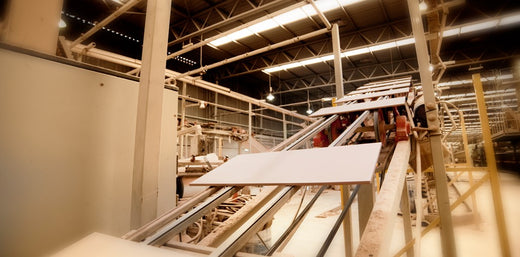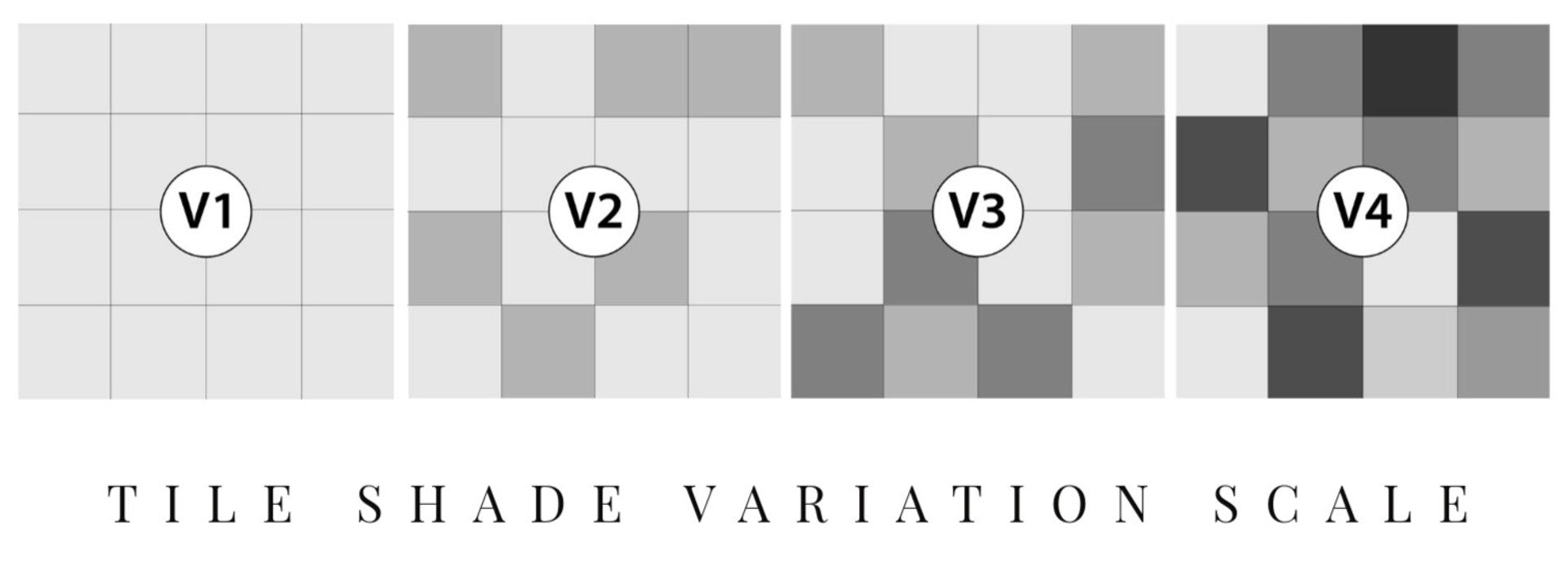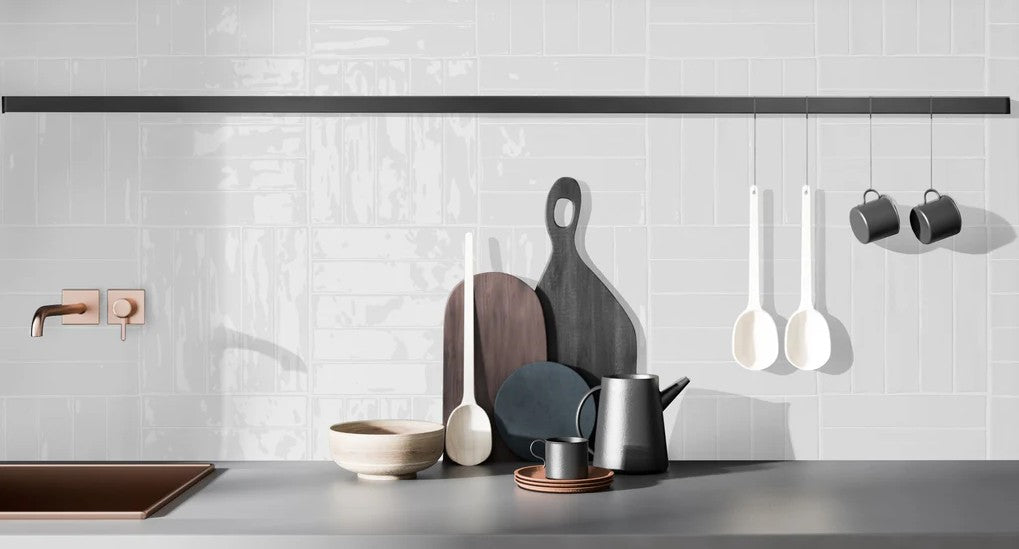Ever wondered why some tile floors seem seamless while others show grout lines? The answer lies in the choice between rectified and non-rectified tiles. This choice can greatly impact your tile installation project, affecting both looks and function. Let's explore the differences to help you pick the right tile for your space.
In tile installation, the choice between rectified and non-rectified tiles is key. Rectified tiles have edges cut precisely, allowing for grout lines as small as 1.3mm. This gives a sleek, almost seamless look great for modern spaces. Non-rectified tiles, with their slightly uneven edges, need wider grout joints and offer a more natural, rustic look.
Choosing between these options affects more than just looks. It also impacts your budget, the installation process, and how long your tile floor lasts. Rectified tiles, though pricier, offer a uniform look and are easier to install. Non-rectified tiles, being more affordable, provide a casual, organic feel but may be harder to install due to size variations.
Key Takeaways
- Rectified tiles allow for minimal grout lines, creating a seamless look
- Non-rectified tiles are more budget-friendly and offer a natural aesthetic
- Tile size, budget, and desired finish are key factors in choosing between the two
- Rectified tiles are ideal for modern spaces and large format installations
- Non-rectified tiles suit traditional or rustic design styles
- The installation process differs between rectified and non-rectified tiles
- Both options have unique pros and cons affecting durability and maintenance
Understanding Tile Rectification: The Basics
Tile rectification is a key step in making modern tiles. It involves cutting tiles to exact sizes and sharp edges after firing. This method has changed how tiles are installed, opening up new design and aesthetic possibilities.
What is a rectified tile?
A rectified edge tile is made by finishing tiles mechanically after they're produced. This makes the tiles precise and with sharp, square edges. The big plus of rectified tiles is they can be installed with almost no grout, making the look seamless.

The manufacturing process of rectified tiles
The rectification process includes cutting, machining, or grinding tiles to reduce size differences. This ensures all tiles are the same size, allowing for tighter installations. The thickness of the tile doesn't change, as rectification mainly focuses on the edges.
Key differences between rectified and non-rectified tiles
Rectified tiles have some big advantages over non-rectified ones:
- Edge precision: Rectified tiles have sharp, square edges, while non-rectified tiles may have slightly irregular edges.
- Grout line width: Rectified tiles allow for extremely fine grout lines of 3mm or less, compared to wider joints required for non-rectified tiles.
- Visual appeal: The minimal grout lines of rectified tiles create a more seamless, modern look.
- Installation precision: Laying rectified tiles requires more skill and time, often necessitating a leveling system for optimal results.
The American National Standard Institute (ANSI) A137.1 specification groups tiles into natural, calibrated, and rectified. Rectified tiles have the tightest size tolerance, slightly less than 1/16", making them perfect for installations with minimal grout joints.
The Advantages of Rectified Tiles
Rectified tiles have a sleek, modern look that's unmatched. They are cut to precise edges and uniform sizes after firing. This makes them perfect for contemporary spaces, with almost no grout lines.
One big plus of rectified tiles is less tile lippage. Their even edges mean a smooth surface, no raised corners or uneven spots. This boosts both looks and safety, making cleaning easier.

Rectified porcelain tiles add sophistication. Their clean lines and minimal grout make them ideal for large, open areas. They help make rooms look bigger and more unified.
"Rectified tiles allow for installation extremely close together, minimizing visible grout lines and creating a uniform, seamless look that clients love," says a leading tile expert.
Here's a quick comparison of rectified and non-rectified tiles:
| Feature | Rectified Tiles | Non-Rectified Tiles |
|---|---|---|
| Edge Type | Sharp and precise | Natural and varied |
| Grout Lines | Minimal (as little as 1.3mm) | Wider |
| Appearance | Modern and sleek | Traditional and warm |
| Installation | Requires precision | More forgiving |
| Maintenance | Easier due to less grout | Standard |
Rectified tiles might cost more, but many see it as worth it for their polished look. They also need less upkeep and are easier to clean, making them a smart investment for the long run.
Non-Rectified Tiles: When to Consider Them
Non-rectified tiles have unique benefits in certain situations. They give a natural, casual look that's great for traditional or rustic designs. Let's look at when these tiles might be the best choice for your project.
Benefits of Non-Rectified Tiles
Non-rectified tiles have several advantages. They're less likely to chip at the edges, making them durable in busy areas. Their slightly uneven edges also give a handmade look, perfect for spaces where uniqueness matters.
- More affordable due to fewer manufacturing processes
- Ideal for DIY projects
- Suitable for traditional or rustic designs
- Less susceptible to edge damage
Ideal Applications for Non-Rectified Tiles
Non-rectified tiles are great in certain settings. They're perfect for large tiles (162 x 324) in bathrooms or kitchens. Their wider grout lines also add a traditional look, bringing classic charm to spaces.

Cost Considerations: Non-Rectified vs Rectified
When it comes to cost, non-rectified tiles are often cheaper. They need less processing, which lowers production costs. This makes them a good choice for big projects or when you're on a tight budget.
| Aspect | Non-Rectified Tiles | Rectified Tiles |
|---|---|---|
| Cost | Lower | Higher |
| Edge Precision | Slightly irregular | Precise |
| Grout Lines | Wider | Narrower |
| Installation Ease | More forgiving | Requires precision |
Choosing between rectified and non-rectified tiles depends on your design, budget, and needs. Non-rectified tiles are a cost-effective option with a classic appeal. They're worth considering for many tiling projects.
Aesthetic Considerations: Rectified vs Non-Rectified
Choosing between rectified and non-rectified tiles is all about looks. Rectified tiles give a modern, smooth look with little grout. This is great for modern designs, making rooms look bigger and more even. Porcelain tile, when rectified, looks even more striking.
Non-rectified tiles, on the other hand, offer a traditional look. Their wider grout lines are perfect for rustic or classic styles. This adds charm to kitchens, bathrooms, and outdoor spaces where a casual vibe is wanted.
"The choice between rectified and non-rectified tiles can significantly impact the overall ambiance of a space, influencing perceptions of size and style."
Think about these looks when picking tiles:
- Rectified tiles have clean, precise edges for a uniform look
- Non-rectified tiles have natural, slightly uneven edges for texture
- Rectified tiles are best for modern, simple designs
- Non-rectified tiles are great for rustic or traditional looks
- Porcelain tiles, both types, are durable and stylish
Your choice should match your design vision. Whether you prefer the clean lines of rectified tiles or the classic feel of non-rectified ones, make sure it enhances your space's beauty.
Installation Challenges and Techniques
Installing rectified tiles needs a lot of precision and skill. It's different from traditional tile installation. Let's look at what makes a rectified tile project successful.
Grout Line Considerations
Rectified tiles have very small grout lines. This makes your floor or wall look seamless. Most people use unsanded grout for these small joints. The grout lines for rectified tiles are about 1/8 inch wide.

Subfloor Preparation
Getting the subfloor ready is key for tile installation, even more so for rectified tiles. Any flaws in the subfloor will show more because of the tiles' precise edges. Use a high-quality tile backerboard to make a smooth, even surface for your tiles.
Tools and Skills Required
Installing rectified tiles needs special tools and skills:
- Precision cutting equipment
- Mechanical leveling systems
- Wet saw with a porcelain blade
- Experience with thin-set mortar application
It's often best to hire professionals for rectified tile installation. They cost between $15 to $20 per square foot for their expertise.
| Aspect | Rectified Tiles | Non-Rectified Tiles |
|---|---|---|
| Grout Lines | Minimal (1/8 inch) | Wider (varies) |
| Subfloor Prep | Critical | Important, but more forgiving |
| Installation Difficulty | High | Moderate |
| Cost (per sq ft) | $15-$20 | $10-$15 |
Rectified tiles give a sleek look but are harder to install. Non-rectified tiles are easier to work with, making them great for DIY projects.
Rectified Tile vs Non Rectified Tile: Pros and Cons
When deciding between rectified and non rectified tile, consider several factors. Rectified tiles have precise edges and small grout lines, giving a smooth look. They're perfect for modern places like fancy kitchens and business areas. These tiles can have grout lines as thin as 3mm, making the look even more uniform.
Non rectified tiles have a more natural, slightly rough edge. They fit well with traditional or rustic designs in kitchens, bathrooms, and outdoors. These tiles need wider grout lines, usually between 1/8th and 3/16th of an inch.
The cost is a big factor in this choice. Rectified tiles cost more because of the extra cutting needed. They're not smaller than 300mm x 300mm and need skilled installers for a seamless look.
Tile lippage is also important. Rectified tiles can lower lippage risks if installed right, but small alignment issues might happen. Non rectified tiles are better at handling uneven floors.
| Feature | Rectified Tiles | Non Rectified Tiles |
|---|---|---|
| Edge Precision | Clean, precise | Natural, slightly uneven |
| Grout Lines | As thin as 1/16 inch | 1/8 to 3/16 inch |
| Cost | Higher | Lower |
| Installation Difficulty | Requires more precision | More forgiving |
| Aesthetic | Modern, seamless | Traditional, natural |
The choice between rectified and non rectified tiles depends on your style, budget, and installation skills. Both have their benefits, making them right for different projects and tastes.
Choosing the Right Tile for Your Space
Choosing the perfect tile floor is more than just picking a color. It's about considering many factors. Whether you choose porcelain or ceramic, it will change how your space looks and feels.
Factors to Consider When Selecting Tiles
The size of your room is key when picking tiles. Big rooms look better with rectified tiles, which have less grout. Smaller rooms might do well with non-rectified tiles for a more classic look.
Think about how much traffic your room gets and if it's near water. These factors are important too.
Room-Specific Recommendations
Kitchens need tough porcelain tiles because they get a lot of use. Bathrooms should have tiles that can handle moisture. Living rooms can have decorative tiles, and bedrooms can have softer, warmer ones.
| Room | Recommended Tile Type | Key Consideration |
|---|---|---|
| Kitchen | Porcelain | Durability |
| Bathroom | Ceramic or Porcelain | Moisture Resistance |
| Living Room | Decorative Ceramic | Aesthetic Appeal |
| Bedroom | Warm-toned Ceramic | Comfort |
Matching Tiles to Your Design Style
Your tile choice should match your design style. Modern spaces look great with sleek, rectified porcelain tiles. Traditional or rustic interiors might prefer non-rectified ceramic tiles with wider grout lines.
Remember, your tile floor is a big investment. Choose wisely to be happy with it for years to come.
Maintenance and Longevity: Rectified vs Non-Rectified
Tile floors can last 20 to 50 years with the right care. The choice between rectified and non-rectified tiles affects how easy they are to maintain and how long they last. Rectified tiles have precise edges, making the grout lines very thin.
This thin grout makes the floor look sleek and clean. It's also easier to keep clean because there's less space for dirt to hide.
Non-rectified tiles have wider grout lines. This means they might need more frequent cleaning. But, they're more forgiving and can hide small imperfections better.
They're also less likely to chip than the sharp edges of rectified tiles.
Both types need regular care to last long:
- Clean tile floors once or twice weekly
- Address spills promptly to prevent staining
- Replace damaged tiles quickly to maintain floor integrity
- Reseal natural stone tiles every few years if needed
With the right care, both types of tile floors can last for decades. The choice depends on your style and how often you want to clean.
Popular Tile Materials and Rectification
Tile rectification is key for both looks and function across various tile types. Let's dive into how it affects porcelain, ceramic, and natural stone tiles.
Porcelain Tiles: Rectified and Non-Rectified Options
Porcelain tiles come in two forms: rectified and non-rectified. Rectified tiles have precise edges, making grout lines as thin as 1-2 mm. This creates a sleek, almost seamless look perfect for modern spaces. On the other hand, non-rectified tiles have wider grout lines of 3-4 mm because of slight edge differences.
Ceramic Tiles: When Rectification Matters
Ceramic tiles also have rectified and non-rectified versions. Rectified ceramic tiles are best for a clean, modern look with small grout lines. They're great for large installations in upscale kitchens and bathrooms. Non-rectified ceramic tiles are more affordable and fit well in traditional or rustic settings.
Natural Stone Tiles and Edge Treatments
Natural stone tiles sometimes get edge treatments like rectification, but it's not common. Some high-end natural stone tiles are cut precisely for a uniform look. Others keep their natural edges for a rustic charm.
| Tile Type | Rectified Option | Non-Rectified Option | Grout Line Width |
|---|---|---|---|
| Porcelain Tile | Available | Available | 1-2 mm (rectified), 3-4 mm (non-rectified) |
| Ceramic Tile | Available | Available | 1-2 mm (rectified), 3-4 mm (non-rectified) |
| Natural Stone | Limited availability | Common | Varies based on edge treatment |
Cost Analysis: Rectified vs Non-Rectified Tiles
Choosing between rectified and non-rectified tiles affects your budget and long-term value. Rectified tiles are pricier because of their precise making. They need special tools and skills, which can raise labor costs by about 10%.
Non-rectified tiles are cheaper upfront. They have pressed edges, making them easier to install. This can cut down on labor costs and speed up the project.
| Factor | Rectified Tiles | Non-Rectified Tiles |
|---|---|---|
| Material Cost | Higher | Lower |
| Installation Cost | 10% higher | Standard |
| Grout Line Width | As small as 3/32" | 1/8" or wider |
| Precision Required | High | Moderate |
Rectified tiles might cost more at first, but they can boost your property's value. Their clean look and thin grout lines make them appealing. If you value looks and are ready to invest in quality, rectified tiles are a good pick.
Conclusion
Choosing between rectified and non-rectified tiles for your floor is a big decision. Rectified tiles give a sleek, modern look with thin grout lines. They're great for modern spaces and easy to clean.
Non-rectified tiles, on the other hand, offer a natural, rustic look. They're perfect for traditional designs.
The cost is a key factor in this decision. Rectified tiles are more expensive because of extra manufacturing steps. Non-rectified tiles are cheaper but have a more natural look.
Installation is also different. Rectified tiles need more skill but look seamless. Non-rectified tiles are easier to install but might not look as smooth.
Your choice should match your design goals, budget, and maintenance needs. Both types can make your floor look amazing if installed and cared for right. Think about your space's purpose, your style, and how long you'll keep the tiles









